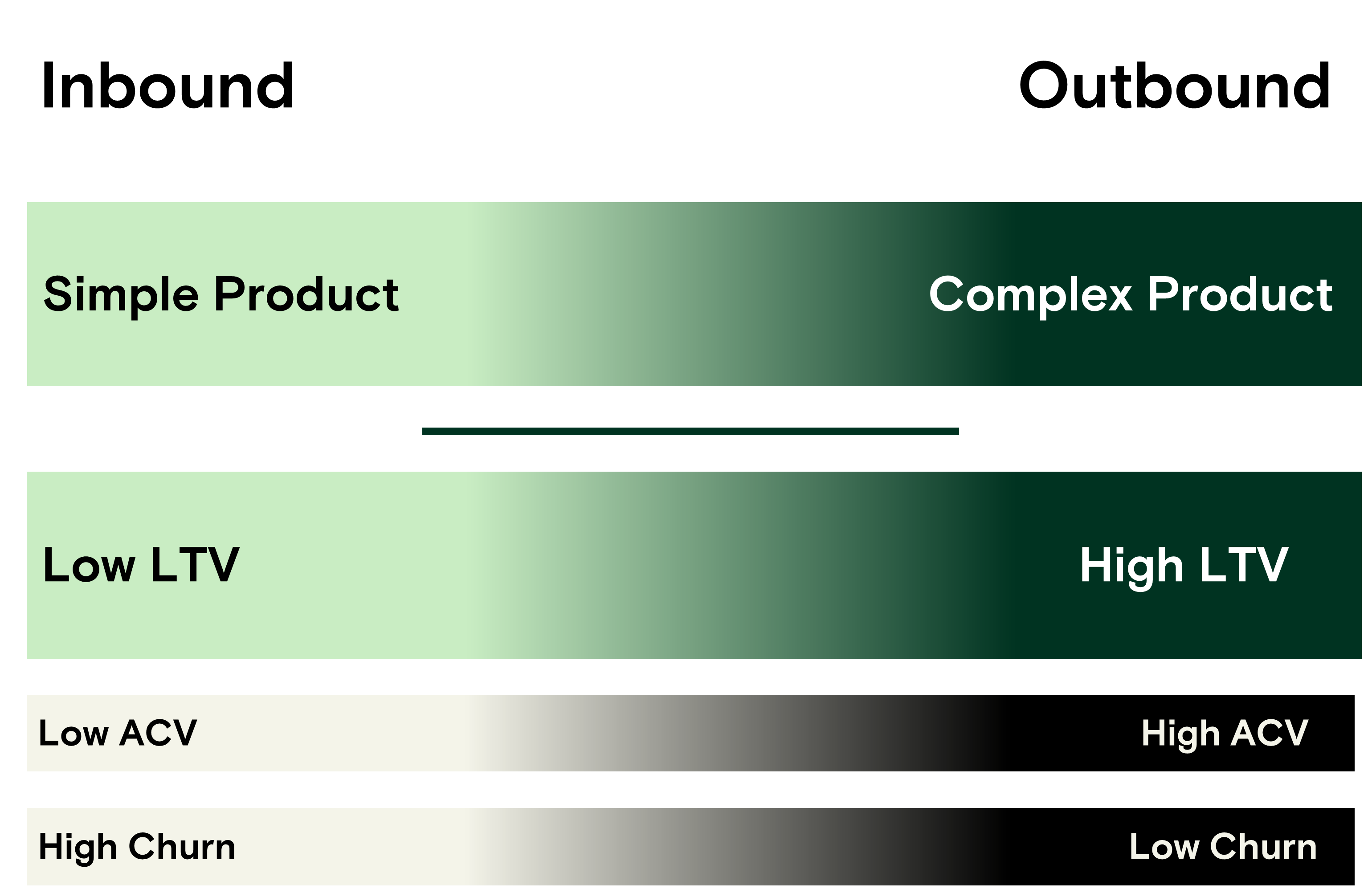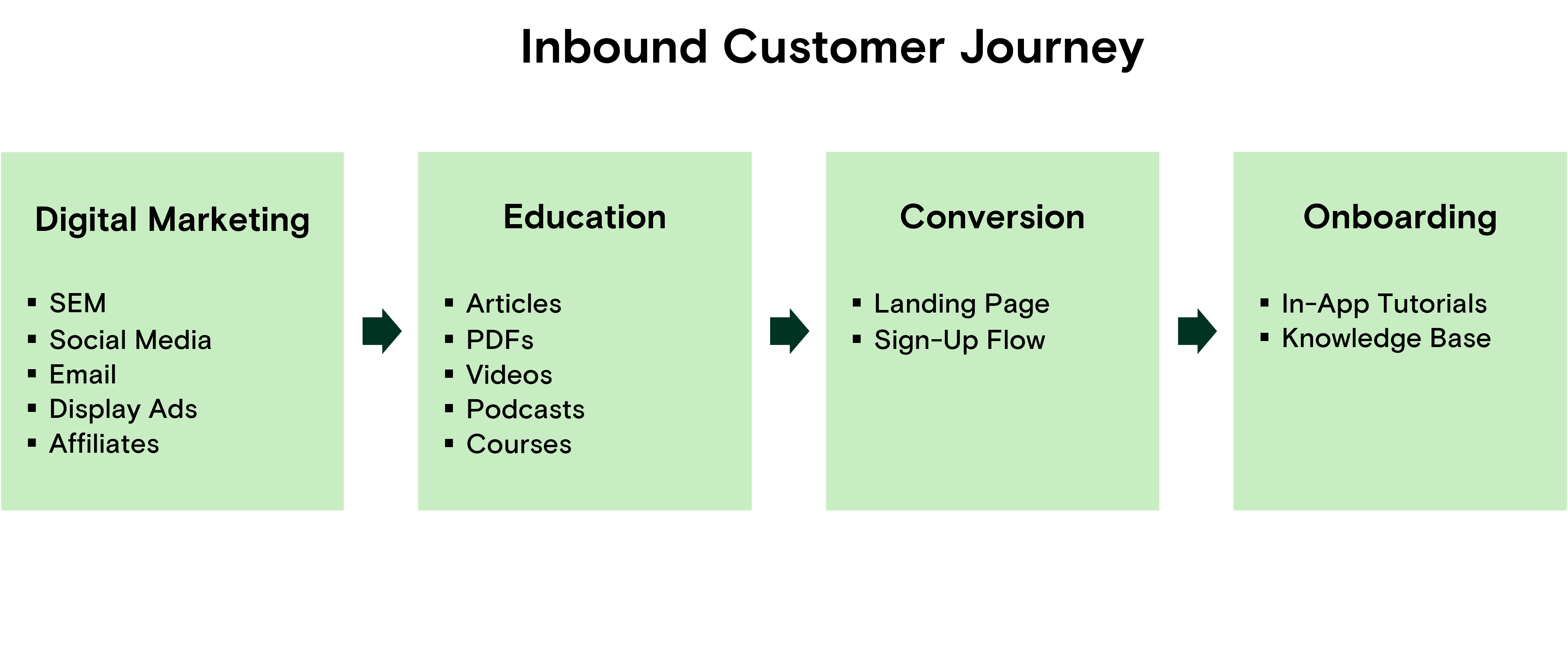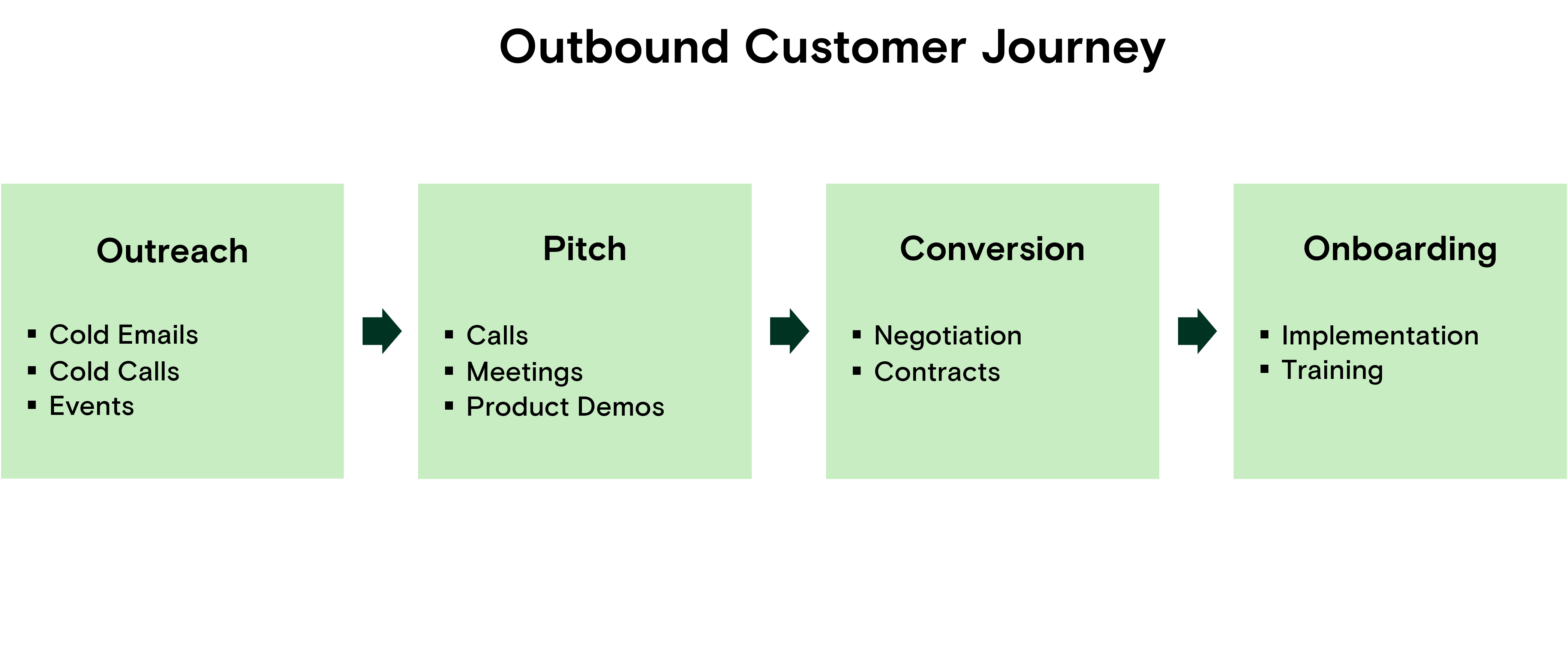Field Services SaaS: Inbound vs. Outbound Sales & Marketing
- Which factors influence your decision to prioritize inbound vs. outbound sales & marketing
- What outbound sales & marketing look like for a field services SaaS provider
A challenge that field services SaaS companies face is identifying the right strategic balance between inbound and outbound sales & marketing.
Having advised several field services SaaS founders through the process of selling their businesses (including how to position the companies’ sales & marketing efforts), here are some takeaways to help you determine what’s best for your company.
Factors Affecting Sales & Marketing in Field Services SaaS
How you balance your sales & marketing efforts between inbound and outbound will in large part depend on:
- Product complexity
- Customer LTV (as determined by average contract value and churn rate)
Generally speaking:
- Inbound is appropriate for marketing simple products with a low customer LTV
- Outbound is appropriate for marketing complex products with a high customer LTV
This tendency is the result of both necessity and opportunity.
For example, an inbound approach can be highly cost-efficient, but is only viable if the product is simple enough and sold at a low enough price to encourage easy purchase. In some cases, efficient acquisition at a low price point is accompanied by high attrition (meaning low LTV), making inbound the only cost-effective approach.
Alternatively, a high price point of a robust product makes outbound marketing feasible, while the complexity necessitates a hands-on sales approach. In addition, the more complex an integration, the lower the churn and higher the LTV, further enhancing the cost feasibility of outbound sales & marketing.

Gauging the complexity of your product should be fairly intuitive, but what constitutes a high or low LTV?
Generally speaking, you should aim for your customer LTV to be more than 3x your Customer Acquisition Cost (i.e. sales & marketing spend / new customers). If your LTV:CAC ratio is too low (below 3), you will need to find more cost efficient strategies to market your business (usually inbound).
Which approach is more common in field services SaaS?
Because many segments of the field services space are dominated by SMBs (think independent home contractors focused on roofing, HVAC, lawn care, etc.), SaaS providers operating in these areas usually lean towards cost-efficient inbound marketing—they focus more on being found than on finding.
Still, large-scale enterprises in field services do exist, especially in sectors with concentrated service providers like pest control or those who employ a franchise model. SaaS companies offering software to these enterprises are in a better position to conduct outbound sales & marketing.
As more and more private equity firms acquire and consolidate SMBs into larger enterprises, the market for enterprise software will increase. As this happens, outbound efforts to sell complex products at high contract values will become more viable.
Inbound vs. Outbound Marketing: What Do They Look Like?
The line between the two approaches isn’t always clear, but below are some examples at two opposites of the spectrum.
Inbound Sales & Marketing
The goal of inbound sales & marketing is to attract new customers to discover and sign up for the product with minimal sales interaction. In this case, most of the customers’ product education and onboarding will be self-directed.
The inbound customer journey will vary from company to company, but roughly speaking it will look like the following:

A sales function can exist within an inbound marketing model, but their job is not about cold emailing/calling but about 1) removing friction along the conversion path, and 2) making upsells for self-service customers.
Theoretically, the inbound sales function can be largely replaced by designing the product with product-led growth (PLG) in mind, in which the experience of the product itself encourages retention and up-sell. Field services SaaS providers offering highly verticalized products are at an advantage in this regard.
Outbound Sales & Marketing
Alternatively, the goal of outbound sales & marketing is to acquire new customers by developing relationships via direct sales. The sales team serves as a primary point of contact, with marketing serving as a supporting role.
A pure play outbound approach could like the following, though many companies also layer on digital marketing efforts:

Hybridized Approach
As mentioned, the above examples are two extremes of a spectrum—many companies employ a hybrid approach, nurturing both inbound and outbound leads.
Depending on the maturity of a company’s sales & marketing, they may break out the sales function into multiple tiers to handle prospects ranging in quality from good to bad to unknown, both inbound and outbound.
How you decide to mix the two approaches should depend on the LTV:CAC of your various products. If one product at a company is simple and sold at a low price point, an inbound approach could be more appropriate. Still, the same company could use a sales-driven outbound approach to up-sell customers to a more robust product.
The M&A Implications of Your Sales & Marketing Strategy
How you structure your sales & marketing function will of course impact your company’s ability to grow revenue, but M&A buyers/investors also take interest in how efficiently you’re growing.
Because the cost to deliver software is relatively small, acquirers and investors treat a SaaS company’s sales & marketing program as the engine driving the company’s efficiency. Consequently, buyers/investors will focus much of their attention on how well the company’s sales & marketing program turns one dollar into more dollars.
What’s the takeaway? That as a founder you should keep a close eye on S&M efficiency metrics to ensure that the strategic decisions you make are positioning you for an optimal exit in the coming future.
Landing with the Right Strategy
The nuances of your product, business, and sector will determine which approaches will best work for your company. Your own unique blend of inbound and outbound could be the differentiator that sets your firm apart, both to customers and prospective buyers.
Still, paying attention to the core sales efficiency metrics will keep you apprised of what’s working and what’s not.
Read this article to learn more about SaaS sales & marketing efficiency metrics.